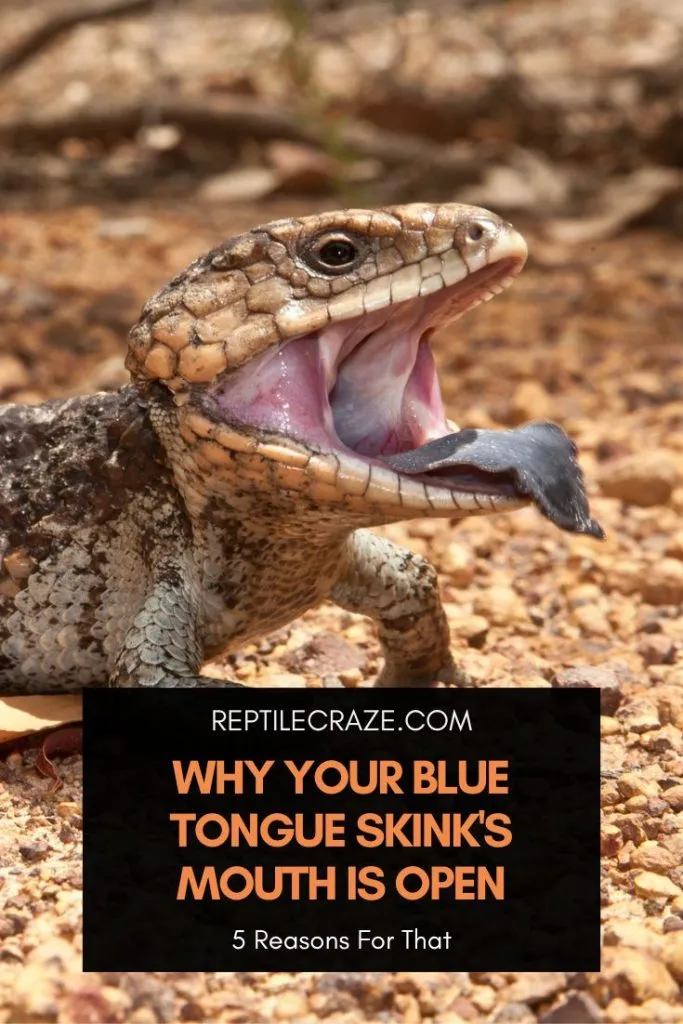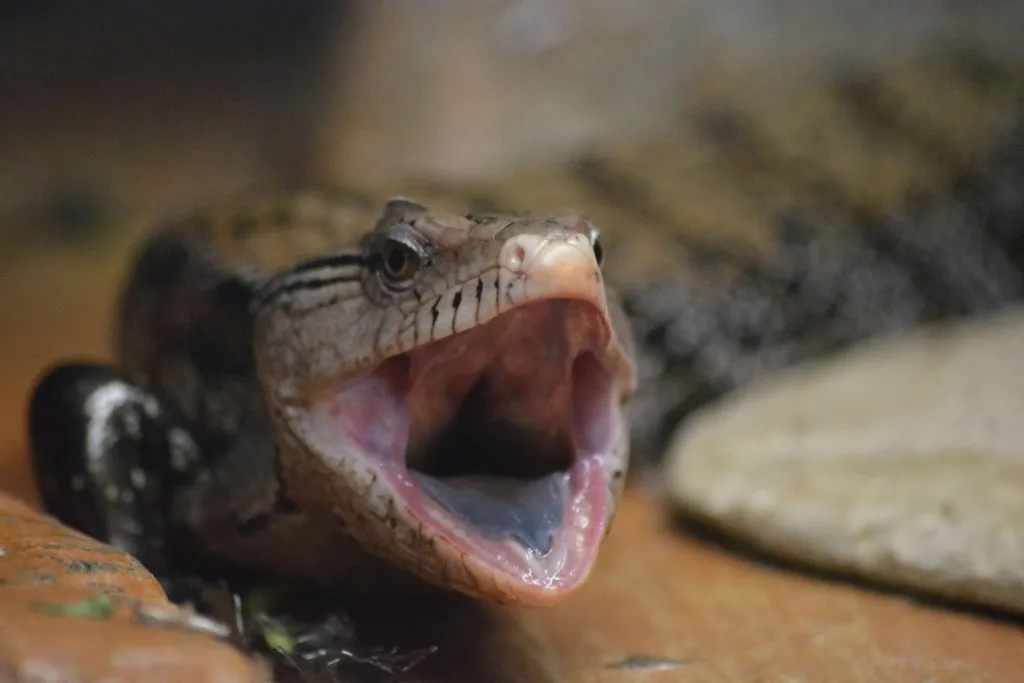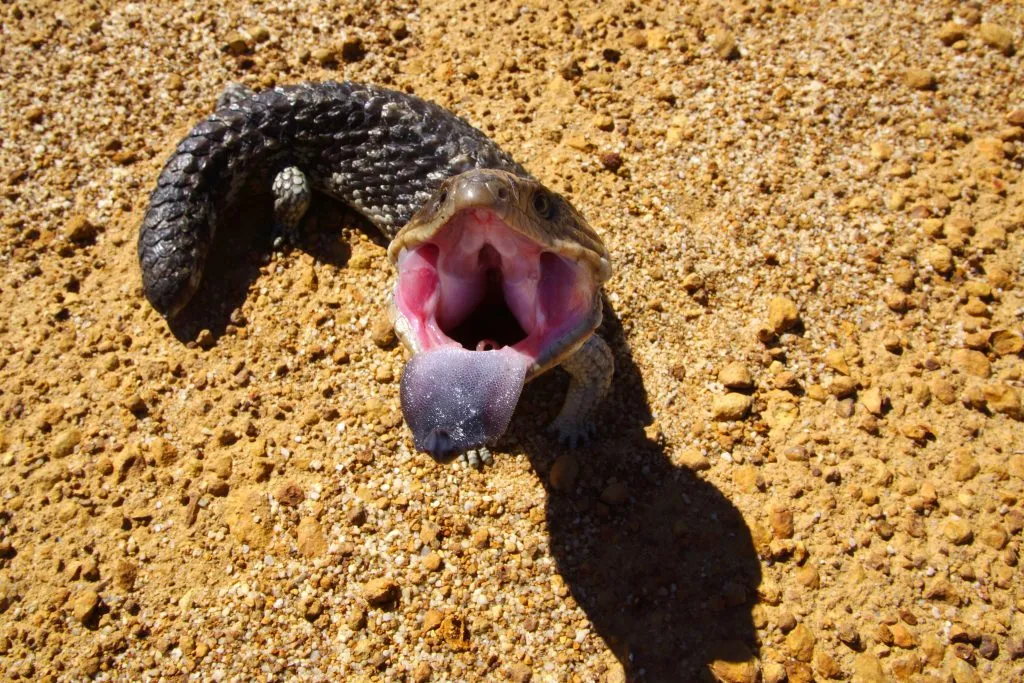
Have you noticed that your blue tongue skink is repeatedly opening and closing its mouth? This is a relatively common occurrence, but many owners are unsure when they should seek medical attention for their reptile and when the behavior is nothing to worry about. Why do blue tongue skinks open their mouths?
A blue tongue skink may open its mouth in defense against you or another reptile. It could also be a simple readjustment, help with shedding, or a need to cool down. Be aware of the symptoms of respiratory infection that require immediate veterinary care, such as heavy breathing and mucus.
For more information on why a blue tongue skink opens its mouth and when you should seek veterinary care, here is what you need to know.
Table of Contents
5 Reasons Why Your Blue Tongue Skink Opens its Mouth
If you are unsure why your reptile is opening and closing its mouth, make sure to pay attention to other clues.
Take note of the full environment and other symptoms to determine which of these reasons is the most likely fit for your reptile.
1. Defense Against Unfamiliar Surroundings or Other Reptiles
One of the most common reasons a blue tongue skink pops open its mouth is in defense. This is common when you first bring your reptile home or if you are introducing new lizards into the same enclosure.
Opening their mouth as if to bite someone or something allows them to display their blue tongue in warning to those that they feel may cause them harm.
Here is a video of what it might look like to see your blue tongue skink open its mouth wide:
Oftentimes, the open mouth will be accompanied by hissing or puffing up the body if self-defense is the primary cause. Many blue tongue skinks will also stick out their tongue to display what makes them unique.
This is no reason to be concerned at first. An open mouth as if planning to bite might be a very natural response to stressors in their environment.
Owners only need to be concerned if it seems that their blue tongue skink is constantly in defense mode. The stress can lead to other types of health concerns.
2. Respiratory Infection
A more serious concern with an open mouth in your blue tongue skink is a respiratory infection. They may look upward, opening and closing their mouth in an attempt to breathe.
You may notice that there is some thick saliva or mucus on the tongue or in the mouth while they breathe. This is often accompanied by mouth bubbles.
When should you be concerned with an open mouth that could be a respiratory infection?
An open mouth may be accompanied by heavy breathing and other symptoms that indicate that they are not feeling well such as poor appetite, raising the head to breathe, and frequent sneezes.
Experienced owners may also note secretions from the eyes or nose in addition to the salivation in the open mouth.
If you notice other symptoms that indicate that your blue tongue skink is not doing well, take them to the vet as soon as possible. Fluid on the lungs from a respiratory infection is serious and will require some medication or medical attention to resolve.

Tip: You should also read our article on mouth rot in blue tongue skinks here.
3. Readjustments after Mealtime or Water Intake
In many cases, a blue tongue skink with an open mouth is nothing to be concerned about. If you pay attention to when it occurs, you might notice a pattern.
Many blue tongue skinks will open their mouth wide following meal time or a deep drink of water.
This is a perfectly normal action, often accompanied by other signs of readjustment such as a big stretch for the head and neck.
Your reptile may open and close its mouth a few times in this position. It could be followed by a big yawn to readjust what they just consumed.
As long as it seems to only accompany meal time or drinks of water and resolves quickly on its own, this is nothing to be concerned about.
Tip: If your blue tongue skink’s mouth is open all the time and it has stopped eating, you should read this article.
4. Excess Heat
When your blue tongue skink is heating up, you may notice that they open their mouth more.
Unfortunately, this type of reptile can’t sweat which makes it hard for them to release the heat that they are absorbing, especially if they are too lazy to move away when they reach higher temperatures.
Instead, they will open their mouth to release the heat that is bottled up inside of them.
If your skink is keeping its mouth open all the time, it might be caused by a
Check the
| Area of the Enclosure | Temperature Range |
| Basking Spot | 92°F-100°F |
| Warm Side | 82°F-90°F |
| Cool side | 70°F-80°F |
You may want to consider whether the
Temperatures that are too high can be corrected by installing a lower-wattage bulb or repositioning the lighting so that it is farther away from the enclosure.
Depending on the type of bulb used and whether you implement the use of a reflector, the light might be able to be positioned farther away to achieve the proper temperature gradient.

5. Loosening Skin to Shed
How long has it been since your blue tongue skink last shed its skin? Young skinks will shed every two to three weeks while skinks older than 12 to 18 months will shed roughly once a month.
Adult skinks can go two to three months without shedding.
If you notice your skink opening its mouth, it could be trying to loosen the dead skin from around its throat and jawline.
Chances are that your blue tongue skink is feeling uncomfortable during its shed, and it is trying to speed up the process of ridding itself of too-tight skin. Stretching its jaws wide helps it to get rid of the extra layer of skin.
Other symptoms that could alert you to a potential shed include:
- Dull skin with a clear film or milky-colored skin (look on the belly)
- Lack of appetite
- Irregular bowel movements (Read our blue tongue skink poop guide)
- Irritability
- Rubbing against items or walls in the enclosure
You can assist your skink with shedding by increasing the humidity in the enclosure temporarily. If they are still struggling to get rid of their shed, you may want to see a veterinarian for a consultation.
Final Thoughts
An astute reptile owner will want to make note of when their blue tongue skink opens its mouth. While sometimes it can be completely harmless, that isn’t always the case.
Accompanied by other symptoms, it could signify that you need to get your reptile to the veterinarian as soon as possible for medication and an assessment.
It’s always best to err on the side of caution and take them in to be seen if you have any doubts whatsoever!
- Enchi Ball Python: A Unique and Stunning Morph of Python regius - March 27, 2025
- Emerald Tree Monitor: The Enigmatic Green Guardian of the Rainforest - March 26, 2025
- The Egyptian Cobra (Naja haje): A Fascinating Serpent - March 25, 2025
